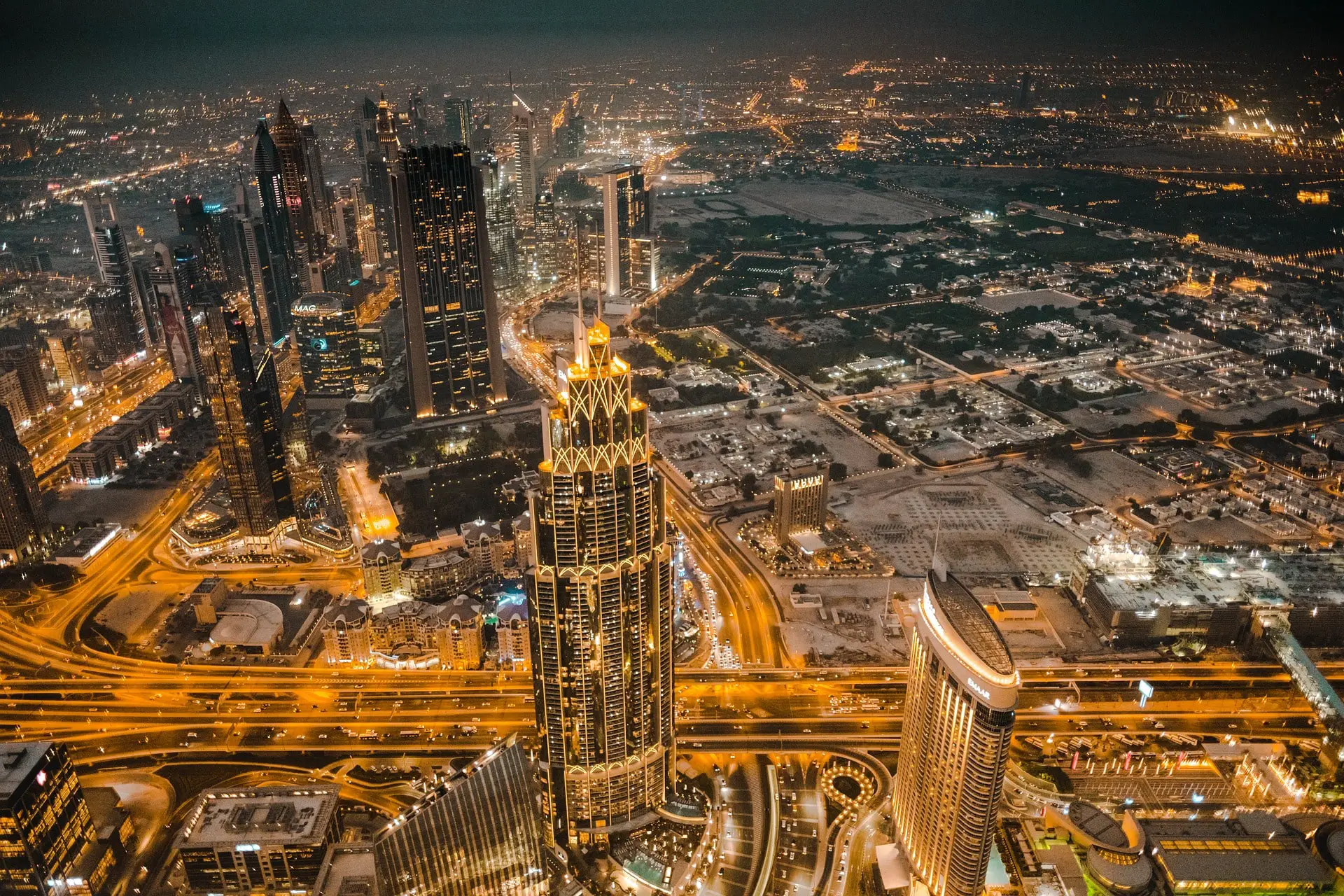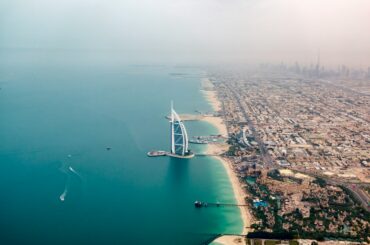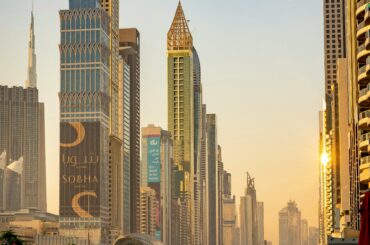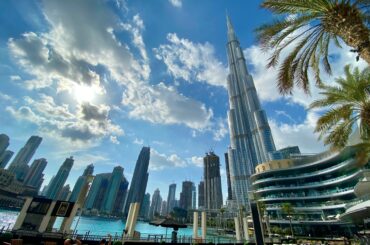Dubai and Abu Dhabi are two of the most popular cities in the United Arab Emirates (UAE), attracting millions of tourists from around the world each year. While they share many similarities, such as their location on the Persian Gulf and their Islamic culture, they also have several distinct differences that visitors should be aware of.
Understanding the differences between Dubai and Abu Dhabi is crucial for anyone planning a trip to the UAE. Each city offers its unique set of attractions, landmarks, and experiences, and knowing what to expect can help visitors make informed decisions about where to stay and what to do. Whether you’re interested in modern architecture, cultural landmarks, or luxurious shopping, Dubai and Abu Dhabi have something to offer. In this article, we’ll explore the main differences between these two cities, covering their location, size, economy, architecture, and attractions.
Contents
 Location
Location
Dubai and Abu Dhabi are both located on the southeast coast of the Persian Gulf, a body of water that borders several countries in the Middle East, including Saudi Arabia, Oman, and Iran.
Dubai is situated on the southeast coast of the Persian Gulf and is the most populous city in the UAE. It is located about 120 kilometers southeast of Abu Dhabi and is closer to the Oman border. The city is known for its beaches, modern architecture, and luxury shopping.
On the other hand, Abu Dhabi is situated on an island in the Persian Gulf and is the UAE’s capital city. It is located about 120 kilometers northwest of Dubai and is closer to Saudi Arabia. Abu Dhabi is known for its opulent architecture, cultural landmarks, and thriving oil and gas industry.
Both cities have access to the Persian Gulf, which provides ample opportunities for water activities such as boating, fishing, and swimming. They are also well-connected to other parts of the UAE and neighboring countries through international airports, highways, and public transportation systems.
Size
In terms of size, Abu Dhabi is much larger than Dubai, both in terms of land area and population. Abu Dhabi covers an area of approximately 67,340 square kilometers and has a population of around 1.5 million people, making it the largest of the seven emirates that make up the UAE. In contrast, Dubai covers an area of approximately 4,114 square kilometers and has a population of around 3.4 million people.
These differences in size have a significant impact on the overall feel and atmosphere of each city. Abu Dhabi is known for its spacious parks, wide boulevards, and expansive beaches, which give it a more laid-back, relaxed vibe. The city’s large population also means that there is a greater diversity of people and cultures, leading to a more cosmopolitan atmosphere.
Conversely, Dubai is a fast-paced, high-energy city with a bustling city center and towering skyscrapers. Its smaller land area and larger population density create a more compact, urban feel with a focus on modernity, luxury, and innovation. Dubai’s population is also more diverse than Abu Dhabi’s, with a large expatriate community from countries all over the world.
Economy
Dubai and Abu Dhabi have different economies that are based on different industries and sources of income.
Dubai’s economy is largely dependent on tourism, real estate, and trade. The city has developed a reputation as a global hub for commerce and business, with a thriving financial services sector. Additionally, Dubai is home to several large shopping malls and luxurious hotels, which attract tourists from all over the world. The city’s location also makes it an important center for international trade, with a major port and a large airport that serves as a hub for several airlines.
Abu Dhabi, on the other hand, is more focused on the oil and gas industry, which is the main source of income for the city and the entire UAE. The city has large oil and gas reserves, and the government has invested heavily in the industry to develop it into a major player on the global energy stage. Abu Dhabi is also home to several large infrastructure projects, including airports, seaports, and highways, which are designed to support the oil and gas industry and its related businesses.
These economic differences have influenced each city’s development and infrastructure. Dubai’s focus on tourism and trade has led to the development of modern, high-end hotels, shopping centers, and other tourist facilities. The city has also invested heavily in its transportation infrastructure, with a modern metro system and an extensive network of highways.
Abu Dhabi, on the other hand, has focused on developing its oil and gas industry and related infrastructure. This has led to the development of large-scale projects such as the Abu Dhabi International Airport and Khalifa Port, which have helped to establish the city as an important player in the global energy sector.
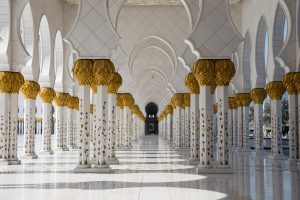 Architecture
Architecture
Dubai and Abu Dhabi have distinct architectural styles and landmarks that reflect their unique cultural and historical backgrounds.
Dubai is known for its modern and innovative architecture, with a skyline that features towering skyscrapers and unique structures. One of the most iconic buildings in Dubai is the Burj Khalifa, which is the tallest building in the world. Other notable landmarks include the sail-shaped Burj Al Arab Hotel, the Dubai Mall, and the Palm Jumeirah, an artificial island that is shaped like a palm tree.
On the other hand, Abu Dhabi has a more traditional and conservative architectural style, emphasizing cultural landmarks and government buildings. One of the most recognizable landmarks in Abu Dhabi is the Sheikh Zayed Grand Mosque, one of the world’s largest mosques and is known for its intricate design and beautiful marble and mosaic work. Other notable landmarks include the Emirates Palace Hotel, the Etihad Towers, and the Qasr Al Watan, a palace that was recently opened to the public as a museum.
These differences in architecture reflect the cultural and historical backgrounds of each city. Dubai’s modern and innovative architecture reflects its rapid development as a global center for commerce and business and its desire to stand out as a unique and forward-thinking destination. Abu Dhabi’s more traditional and conservative architecture, on the other hand, reflects its deep-rooted cultural heritage and its focus on preserving its history and identity.
Attractions
Dubai and Abu Dhabi offer a wide range of tourist attractions that cater to different interests and preferences. Here’s an overview of the top tourist attractions in each city and the types of experiences that visitors can have.
Dubai:
Burj Khalifa – The tallest building in the world offers spectacular views of the city from its observation deck.
Dubai Mall – One of the largest shopping malls in the world, featuring a wide range of luxury brands and entertainment options.
Dubai Fountain – A stunning water and light show set to music that takes place in front of the Burj Khalifa.
Ski Dubai – An indoor ski resort that offers skiing, snowboarding, and other snow-related activities.
Palm Jumeirah – An artificial island that is shaped like a palm tree and features luxurious resorts and restaurants.
Dubai Miracle Garden – A beautiful flower garden that features over 45 million flowers arranged in various shapes and designs.
Dubai Museum – A museum showcasing Dubai’s history and culture housed in a 200-year-old fort.
Abu Dhabi:
Sheikh Zayed Grand Mosque – One of the largest mosques in the world, known for its intricate design and beautiful marble work.
Ferrari World – An indoor theme park that features rides and attractions based on the famous Italian car brand.
Yas Island – A man-made island that features several attractions, including theme parks, a water park, and a marina.
Qasr Al Hosn – A historic palace once the ruling family’s residence, now turned into a museum.
Louvre Abu Dhabi – A branch of the famous Parisian museum featuring a collection of artwork from around the world.
Emirates Palace – A luxurious hotel that features a private beach, a marina, and several restaurants and bars.
Saadiyat Island – An island that is being developed as a cultural hub, with several museums and art galleries planned.
In terms of experiences, Dubai is known for its luxurious and modern attractions, with a focus on shopping, entertainment, and adventure. Abu Dhabi, on the other hand, offers a more cultural and historical experience, with a focus on art, architecture, and traditional Emirati culture. Both cities offer a unique blend of old and new and are known for their world-class hospitality and service.
 So, What’s the difference between Dubai and Abu Dhabi
So, What’s the difference between Dubai and Abu Dhabi
Dubai and Abu Dhabi are two popular cities in the United Arab Emirates with distinct differences in terms of location, size, economy, architecture, and attractions.
Dubai is located on the eastern coast of the Arabian Peninsula and is known for its modern and innovative architecture, luxurious attractions, and focus on commerce and business. On the other hand, Abu Dhabi is the capital city of the UAE, located on the western coast. It is known for its traditional and conservative architectural style, cultural landmarks, and emphasis on preserving its history and identity.
The cities also differ in terms of their size, with Dubai being smaller in land area but more populous, while Abu Dhabi is larger in land area but less populous. These differences impact the overall feel and atmosphere of each city.
In terms of economy, Dubai is driven by industries such as tourism, real estate, and finance, while Abu Dhabi’s economy is heavily reliant on the oil and gas industry. These factors have influenced the development and infrastructure of each city.
Finally, both cities offer a range of tourist attractions that cater to different interests and preferences, with Dubai offering a more modern and luxurious experience and Abu Dhabi offering a more cultural and historical experience.
For visitors planning a trip to the UAE, it is important to understand these differences in order to choose the best destination and experience for their preferences. Whether it’s the luxurious attractions of Dubai or the cultural landmarks of Abu Dhabi, both cities offer a unique and unforgettable experience for visitors.
Wondering why everyone in Dubai rich? Read it here.

